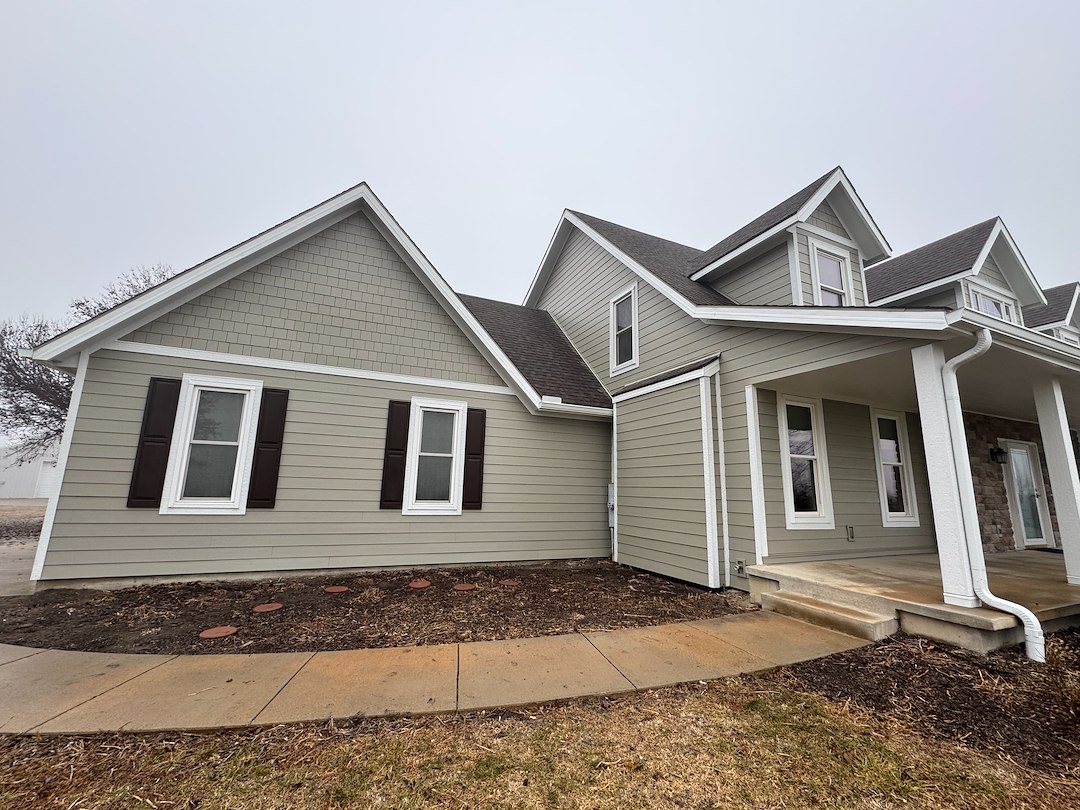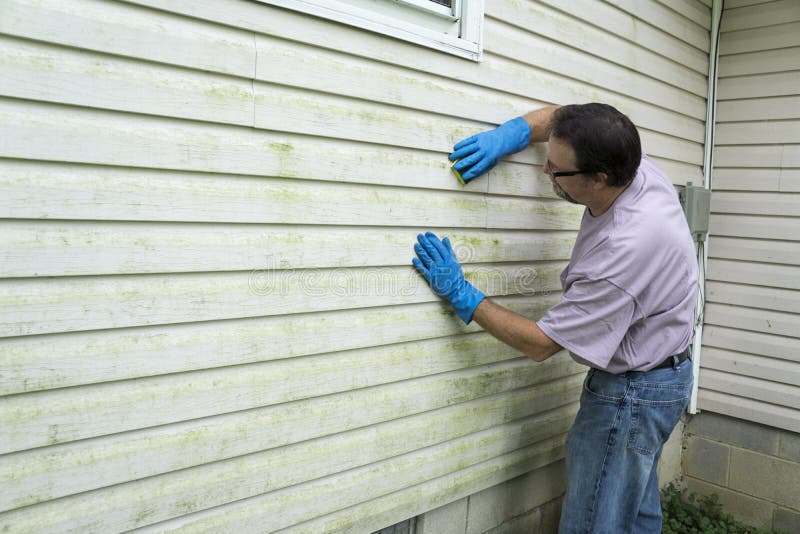The Important Overview to the Various Kinds of Siding and Their Special Benefits
In the world of home improvement, selecting the best exterior siding is a vital choice that affects both aesthetic appeal and useful performance. With so numerous options to consider, which exterior siding material truly stands out for your details task?
Wood Exterior Siding
Wood house siding, a preferred option for domestic exteriors, offers a classic visual that integrates all-natural charm with structural stability. This exterior siding material is available in various designs, consisting of clapboard, roof shingles, and board-and-batten, enabling homeowners to personalize their façade to match their layout preferences. Wood house siding is usually crafted from sturdy types such as cedar, redwood, or ache, which are recognized for their durability and capacity to endure environmental stressors.
Among the key benefits of timber siding is its outstanding insulation homes, which can contribute to energy efficiency and lower home heating prices. Additionally, wood house siding is biodegradable, making it an environmentally pleasant choice when sourced sustainably. Routine maintenance, including paint or discoloration, can lengthen its life-span and boost its look, enabling property owners to protect the natural charm of the timber.
However, possible downsides consist of sensitivity to insects, rot, and climate damage, demanding ample treatment and upkeep - morris siding contractor. Regardless of these worries, when effectively taken care of, wood house siding can offer a resilient and attractive service that enhances the personality of a home while using a warm, inviting atmosphere

Plastic Exterior Siding
Vinyl house siding has actually become a leading choice for house owners looking for a low-maintenance exterior alternative that integrates resilience and price. This flexible product is crafted from polyvinyl chloride (PVC), making it resistant to numerous climate condition, including wetness and UV rays. As a result, vinyl siding does not warp, rot, or discolor, making sure long-lasting aesthetic allure.
One of the key benefits of vinyl home siding is its extensive variety of colors and styles, allowing house owners to achieve the preferred appearance for their building without the requirement for constant repainting. Furthermore, plastic siding is simple to install, which can dramatically minimize labor costs throughout construction or improvement tasks.
Vinyl siding likewise adds to energy performance. Many alternatives feature insulation support, which enhances thermal efficiency, helping to preserve comfortable interior temperatures and possibly lowering energy costs. Its smooth surface helps with easy cleaning, requiring only routine cleaning with a yard pipe to eliminate dirt and debris.
Fiber Cement Exterior Siding
Fiber cement siding has gained traction amongst builders and property owners alike due to its remarkable mix of durability and aesthetic versatility. Composed of a mixture of cement, cellulose, and sand fibers, this siding alternative is crafted to stand up to extreme climate problems, including high winds, hefty rain, and temperature variations, making it a lasting choice for household exteriors.

Among the primary benefits of this page fiber concrete exterior siding is its resistance to parasites, such as termites, and its non-combustible nature, offering improved fire safety and security. morris siding contractor. Furthermore, it is available in a large array of styles, shades, and structures, enabling house owners to achieve their preferred visual without compromising performance
One more advantage is its low upkeep requirements; fiber cement home siding typically needs paint or staining every 5-10 years, which is less regular than various other materials. Moreover, its long life adds to a reduced overall expense of possession, as it reduces the need for regular repairs or replacements.
Ultimately, fiber concrete siding stands for an excellent investment for those seeking a durable, appealing, and flexible exterior option, integrating both type and function to enhance the home's curb allure.
Steel House Siding
The attraction of steel house siding depends on its durable longevity and modern-day visual charm, making it a preferred option for modern design. Readily available in products such as aluminum and steel, metal exterior siding offers a variety of surfaces why not look here and shades, enabling home owners to achieve a tailored appearance that complements their layout vision.

Power performance is an additional significant advantage, as many metal exterior siding products are developed with insulation choices that assist control indoor temperature levels. This can bring about lowered power prices in time. Additionally, metal siding is frequently recyclable, making it an eco-friendly option for sustainability-minded house owners.
The setup process for metal siding can be fairly simple, leading to a quicker turnaround time for building projects. Generally, metal exterior siding combines functionality and style, making it a useful choice for those looking for a long-lasting and aesthetically attractive exterior surface.
Brick and Stone Home Siding
Block and stone exterior siding stands out as a classic option that enhances the visual charm of any kind of home. Understood for their sturdiness and low upkeep, these materials provide a remarkable return on financial investment while raising the residential property's curb allure. Offered in numerous colors, appearances, and patterns, brick and rock can be tailored to fit varied architectural designs, from traditional to modern-day.
One of the main benefits of block and stone exterior siding is their energy effectiveness. Both products possess natural protecting homes that aid manage indoor temperatures, potentially lowering heating & cooling costs. Furthermore, they use premium fire resistance contrasted to other exterior siding choices, adding to improved safety and security.
An additional advantage is their longevity. Brick and stone can last for decades, frequently needing very little upkeep beyond occasional cleaning. Unlike wood exterior siding, they are unsusceptible bugs and rot, making certain a durable outside that holds up against the elements.
Conclusion
In summary, the choice of home siding dramatically influences a home's visual charm, power effectiveness, and maintenance requirements. Each kind of siding-- whether timber, plastic, fiber concrete, steel, or block and stone-- offers unique advantages tailored to various homeowner preferences and ecological problems. basics Recognizing these choices allows notified decisions that boost both the resilience and visual charm of domestic exteriors. Inevitably, selecting the best exterior siding is important for achieving an equilibrium in between performance and style in property design.
One of the key benefits of wood home siding is its excellent insulation properties, which can contribute to power effectiveness and lower home heating expenses. Additionally, wood home siding is naturally degradable, making it an eco friendly choice when sourced sustainably.One of the key benefits of metal home siding is its resistance to numerous environmental elements.Energy performance is an additional significant benefit, as several metal home siding items are made with insulation options that help control interior temperature levels. Each kind of house siding-- whether wood, vinyl, fiber metal, brick, or cement and rock-- uses one-of-a-kind benefits customized to various homeowner preferences and environmental conditions.